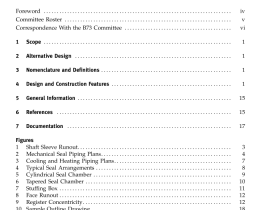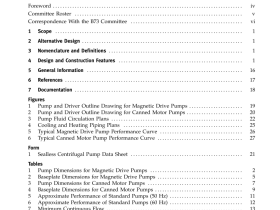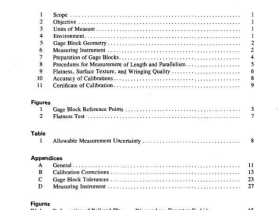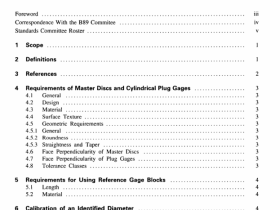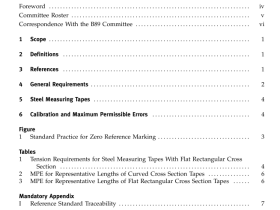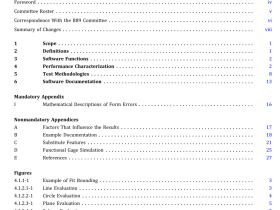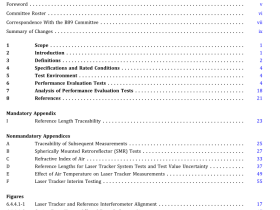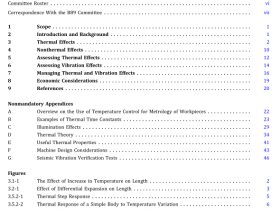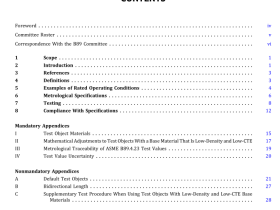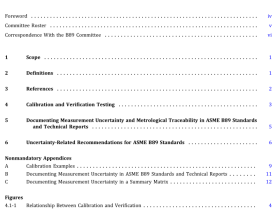ASME B29.8 pdf download
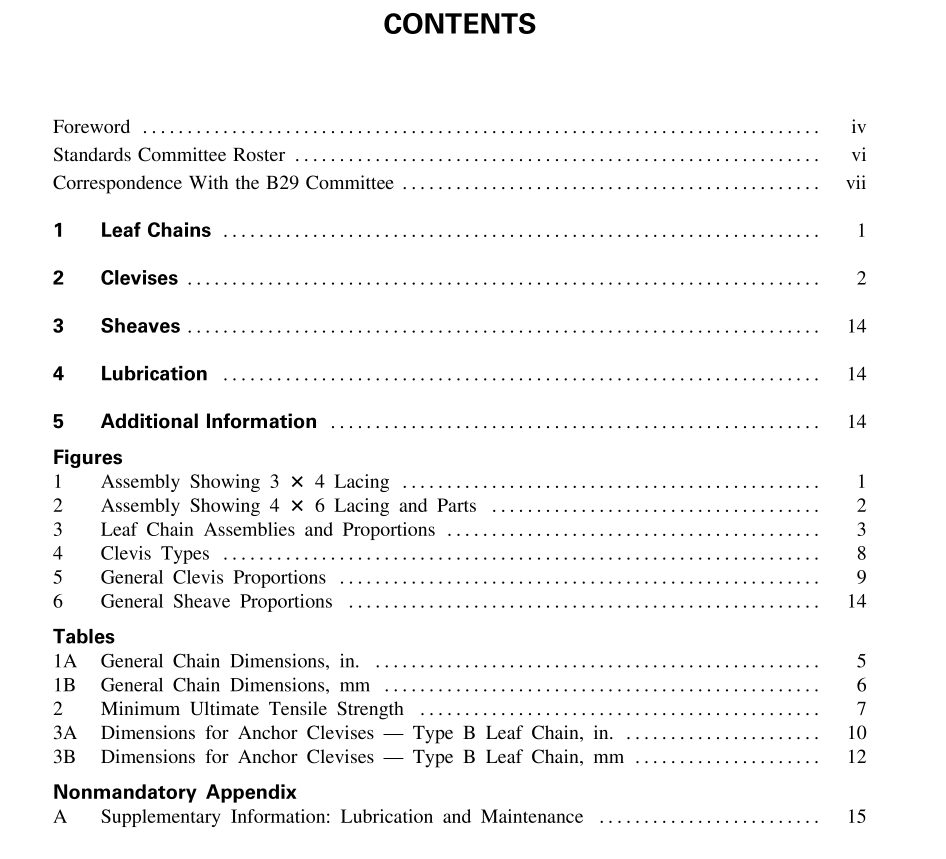
ASME B29.8 pdf download LEAF CHAINS, CLEVISES, AND SHEAVES
1 LEAF CHAINS
1.1 Description A leaf chain consists of a series of link plates alternately assembled with pins in such a way that the joint is free to articulate between adjoining pitches. Typical assemblies are depicted in Figs. 1 and 2.
1.2 Numbering and Marking System The chain described in this Standard shall carry the prefix BL. The last two digits of the number following the prefix denote the lacing. The right-hand digit desig- nates the number of link plates in the articulating pitch. The digit to the left of this designates the number of plates in the pin link pitch. The digits to the left of those two digits denote the number of eighths of an inch in the chain pitch.
EXAMPLE: BL523 indicates Type BL leaf chain, 5 ⁄ 8 in. pitch with a 2 3 lacing; that is, two plates in the pin link pitch and three plates in the articulating link pitch. Chains shall be marked with the manufacturer’s name or trademark.
1.3 Assemblies and General Proportions
Various assemblies and general proportions for leaf chains are depicted in Fig. 3. Dimensions used in the figures are as follows:
CL p clearance
D p pin diameter
D max. p maximum pin diameter
H p link plate height
H max. p 0.95P
L m p minimum width between pin link plates
P p chain pitch
S p hole diameter of articulating link plates
S min. p approximately D max. + 0.0012 in.
T p link plate thickness
T max. p maximum link plate thickness (based on normal steel tolerance). (See Table 1A or 1B for values or T max. )
W p width of chain over pin ends
W max. p w max. + 0.5D max.
w p width over pin link plates
w max. p (T max. + CL) ? number of link plates across width of chain
1.4 General Chain Dimensions for Interchangeability The dimensions given in Tables 1A and 1B provide guidance that will ensure interchangeability and compa- tibility with standard design clevises. It is recommended that these dimensions be considered for actual minimum and maximum limits. Manufacturers are responsible for the actual dimensional features of their products. NOTE: Chains from different manufacturers must never be placed together within the same application.
1.5 Minimum Ultimate Tensile Strength (M.U.T.S.) Minimum Ultimate Tensile Strength (M.U.T.S.), for chain covered by this Standard, is the minimum force at which an unused, undamaged chain could fail when subjected to a single tensile loading test.
(a) WARNING: The Minimum Ultimate Tensile Strength is not a “working load.” The M.U.T.S. greatly exceeds the maximum force that may be safely applied to the chain.
(b) Test Procedure: A tensile force is slowly applied, in a uniaxial direction, to the ends of the chain sample.
(c) The tensile test is a destructive test. Even though the chain may not visibly fail when subjected to the Minimum Ultimate Tensile Strength, it will have been damaged and will be unfit for service. 1.6 Tolerance for Chain Length New chains may have a tolerance of ±0.031 in./ft (2.58 mm/m) when measured under standard measuring load as outlined in para. 1.7.
1.7 Measuring Load This is the load under which a chain is to be measured for length. It is equal to 1% of the minimum
